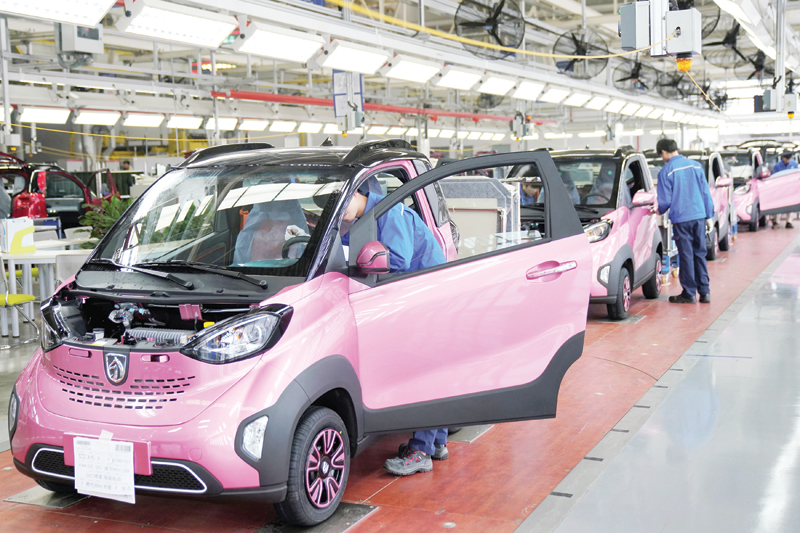

General Motors Co Chief Executive Mary Barra has made a bold promise to investors that the Detroit automaker will make money selling electric cars by 2021. What Barra has not explained in detail is how GM intends to do what, so far, no major automaker has done.
The answer is a big bet on combining proprietary battery technology, a low-cost, flexible vehicle design and high-volume production mainly in China, according to six current and former GM and supplier executives and six industry experts.
If GM can meet Barra’s ambitious profitability target, then it will house two different businesses by the mid-2020s: A traditional focus in North America on trucks, sport utility vehicles and cars fuelled with petroleum, and a global electric car company centred in China, branching into pay-per-use services such as robotaxis.
Barra’s promise to turn a profit is a bold claim in a market segment that has been driven more by government policy than consumer demand, and where Tesla Inc — the world’s largest electric-vehicle manufacturer — is burning through more than $1 billion in cash each quarter selling premium-priced vehicles.
Barra and GM have invested heavily in the electrification strategy, and worked during the past year to persuade investors that GM can compete with Tesla by building on the success of the automaker’s latest electric vehicle, the Chevrolet Bolt EV, and cutting costs along the way.
A key element of the plan, according to two people familiar with the company’s strategy, is slashing the amount of cobalt in GM’s new EMC 1.0 battery system.
The price of cobalt — the single most costly ingredient in current lithium-ion battery cells — has soared in the past two years in expectation of a surge in demand from automakers.
Cobalt prices hit a record high this month on the London Metal Exchange.
GM’s new battery design increases the amount of nickel, which enables batteries to store and produce more energy, these people said.
GM engineers are also working on other design and technological advances, according to executives and company patent filings, including more efficient packaging of batteries in vehicles and improved systems for managing energy flow and cooling the battery cells.
Without providing details, GM has said it expects these changes to cut the cost of battery cells by more than 30 per cent, from $145 per kilowatt-hour to less than $100 by 2021.
Battery experts said the full cost of a GM battery pack, such as the one used now in the Bolt EV, is $10,000-$12,000, or nearly one-third of the car’s $36,000 sticker price.
By 2021, however, that price could drop to $6,000, according to consultant Jon Bereisa, a former GM engineering director who helped develop the Chevrolet Volt hybrid and spearheaded much of the automaker’s early lithium-ion battery development.
With improvements in battery chemistry and packaging, Bereisa said, the next-generation Bolt “could deliver a 45 per cent increase in range for about the same (battery) pack cost, or the same range at 45 per cent less pack cost.”
Pam Fletcher, VP of GM’s global electric vehicle programmes, and other GM executives would not comment on specifics of the new battery system, which is slated to be introduced in 2020-2021.
To be sure, electric vehicles account for only a small fraction of global auto sales.
Like other manufacturers, GM is banking not only on reducing its own costs and improving vehicle performance, but also on increased demand driven by higher government-mandated electric vehicle quotas in China that are intended to help reduce pollution and the country’s dependence on petroleum.
In addition to improving battery, vehicle design and performance, GM is working with Chinese partner SAIC to reduce the cost of assembling electric cars. — Reuters
Paul Lienert and Joseph White
Oman Observer is now on the WhatsApp channel. Click here



